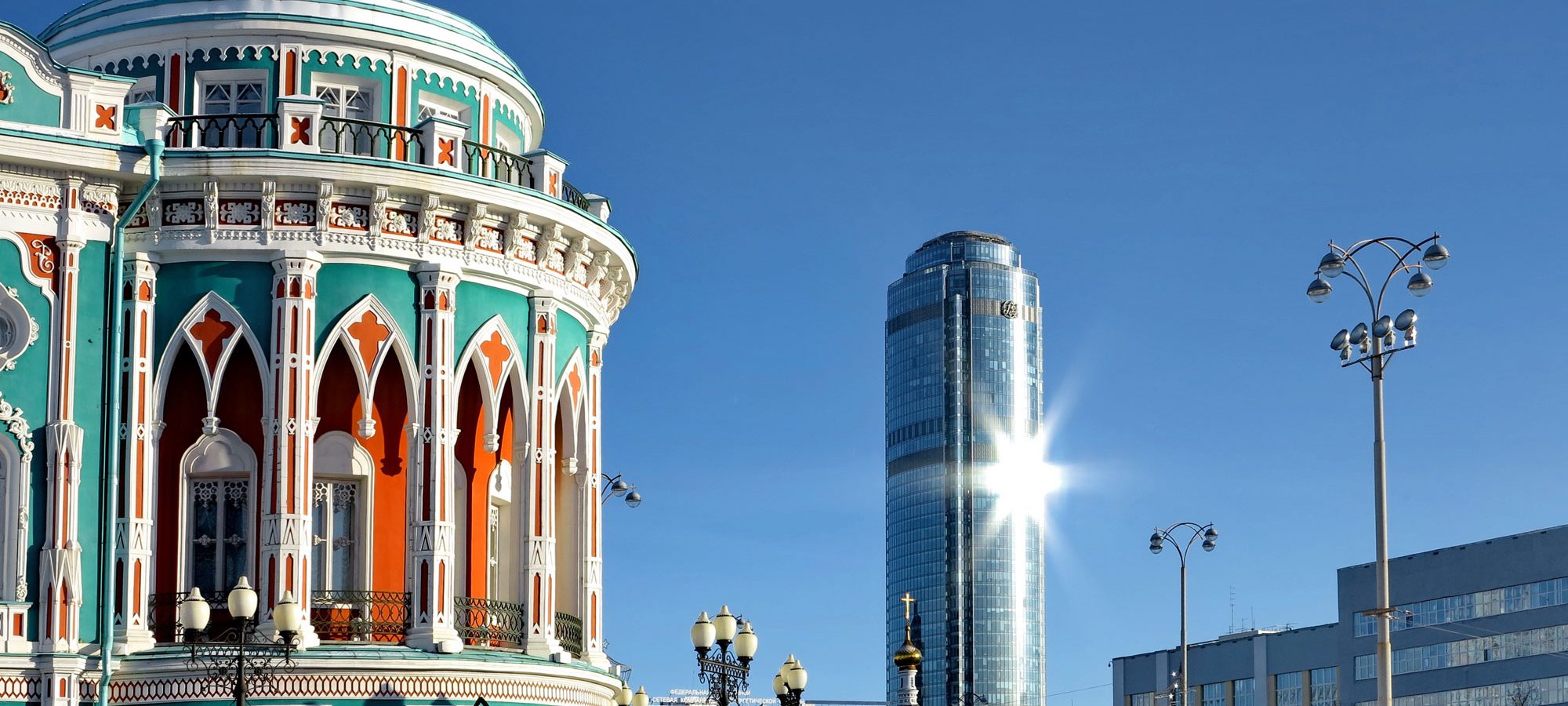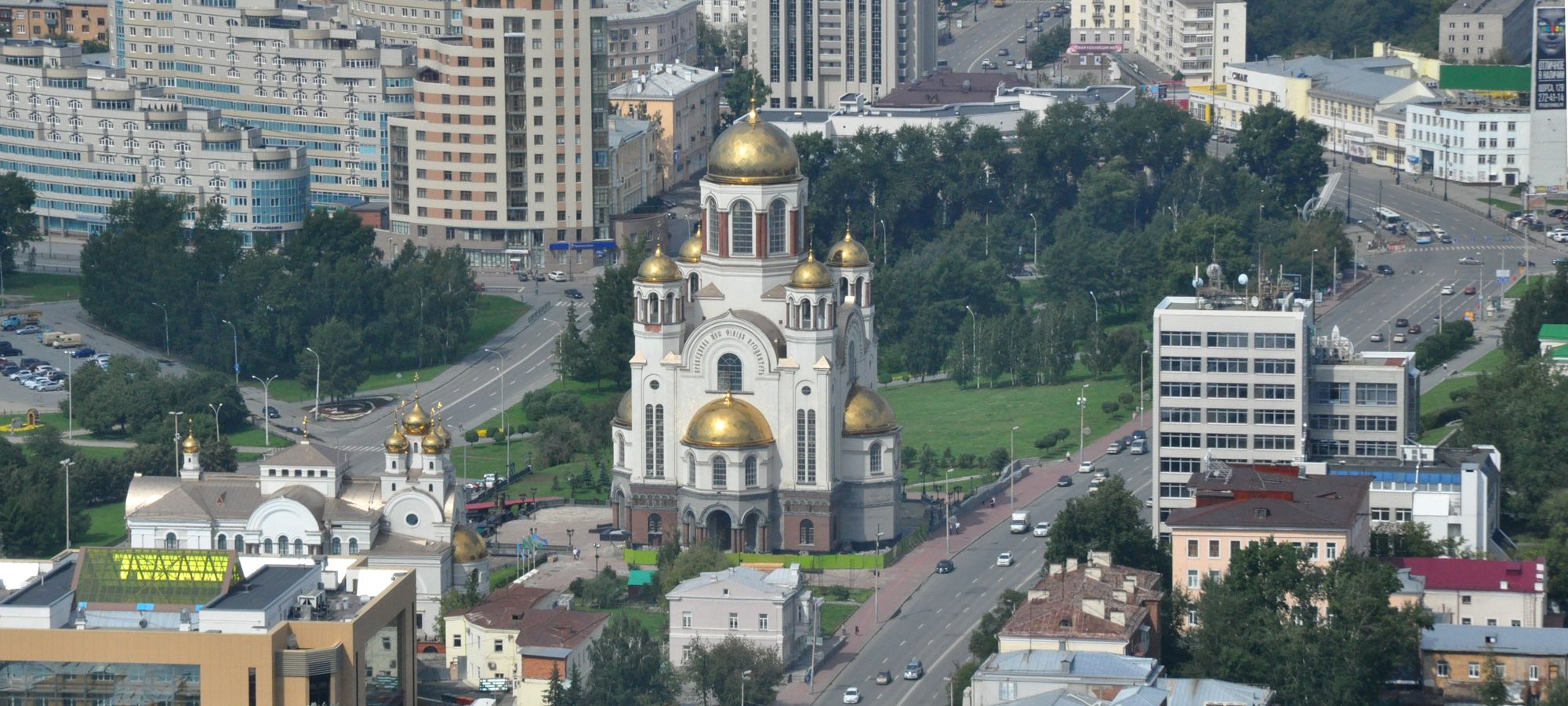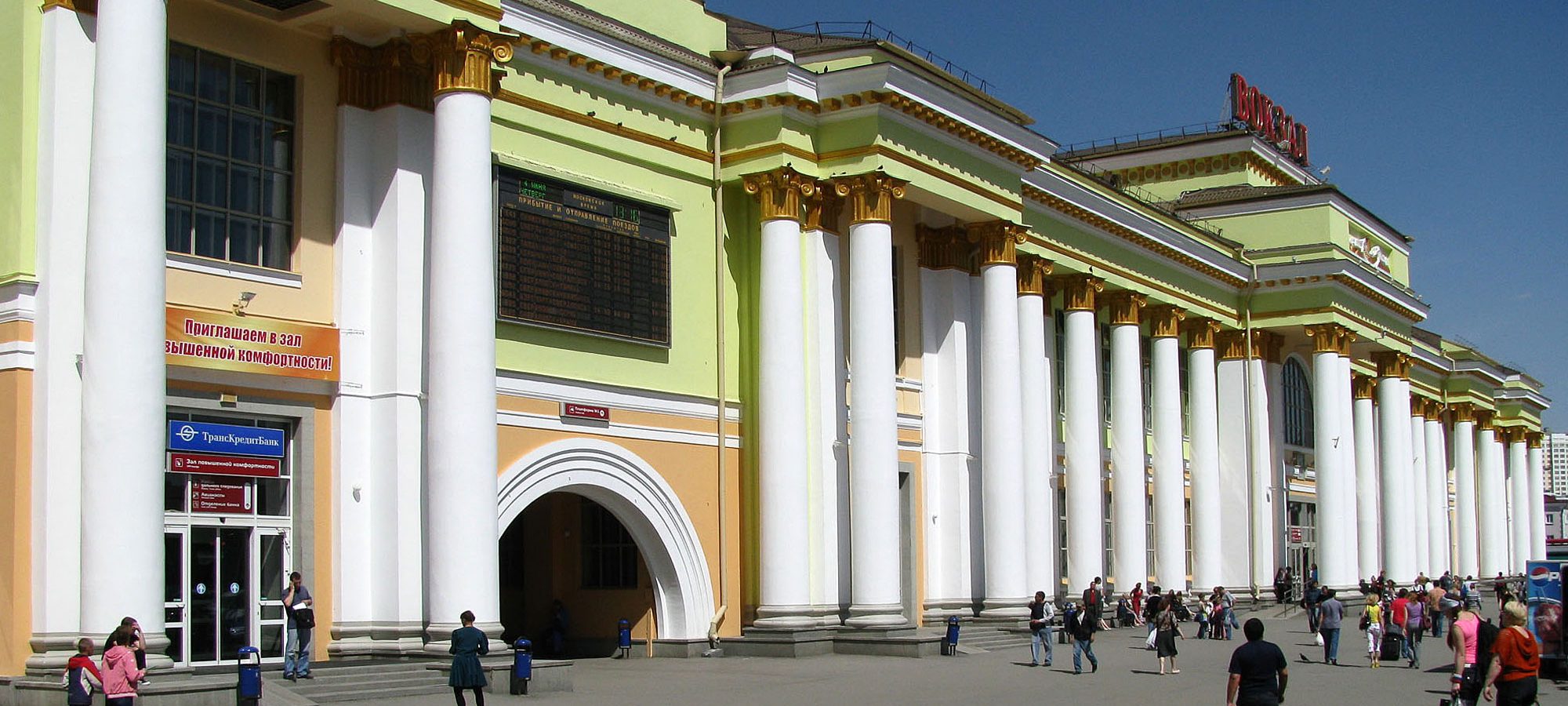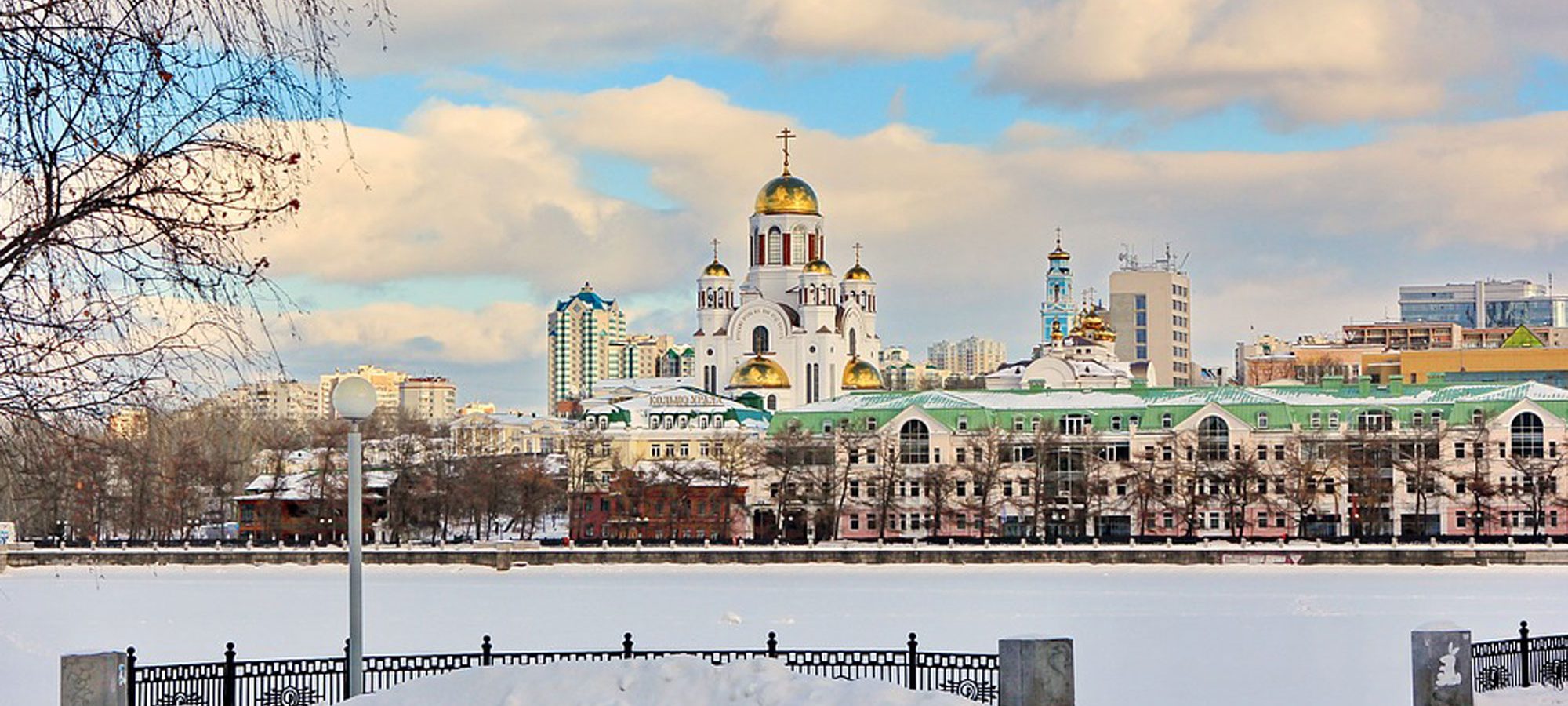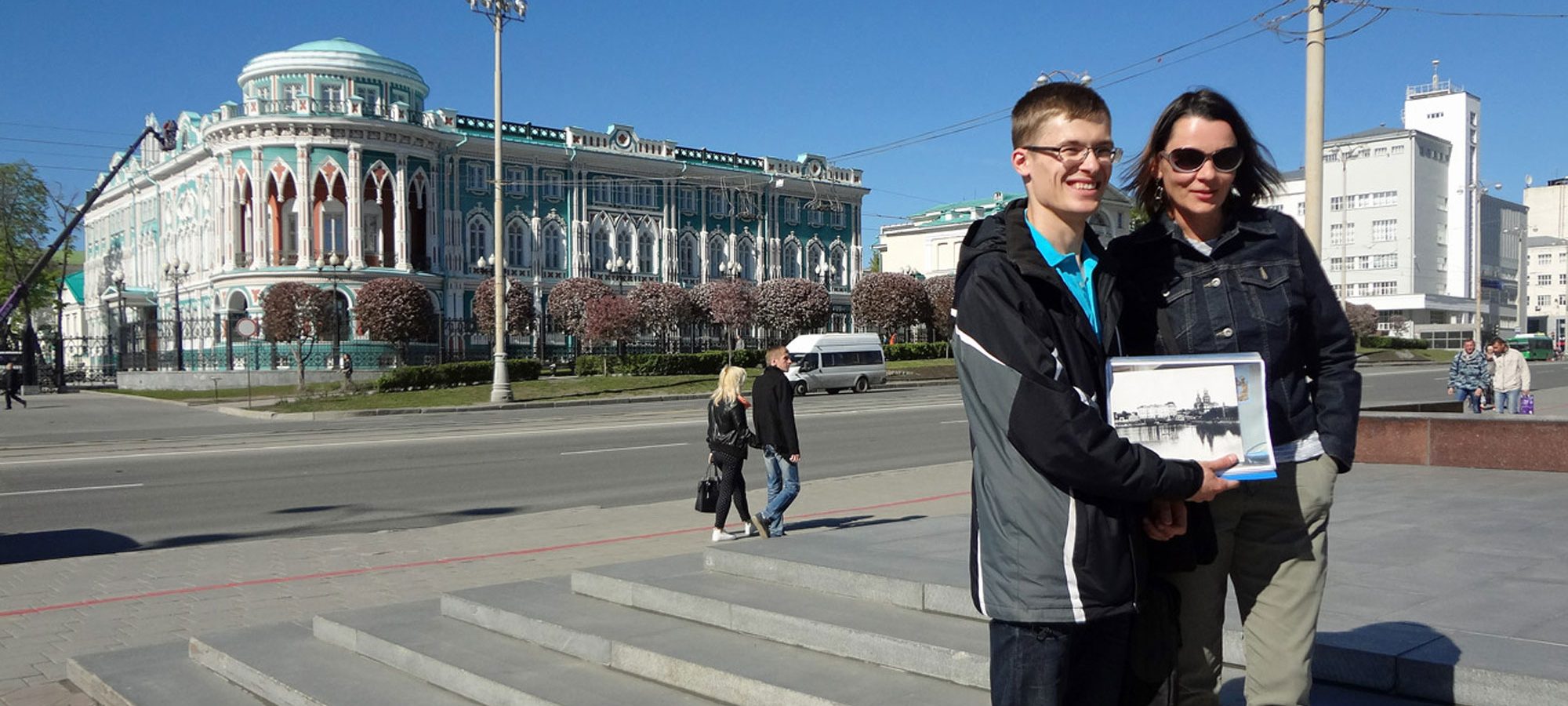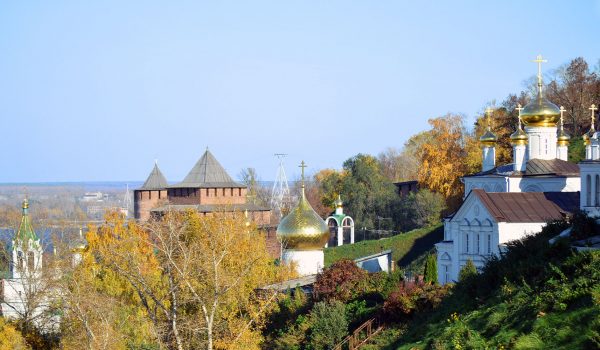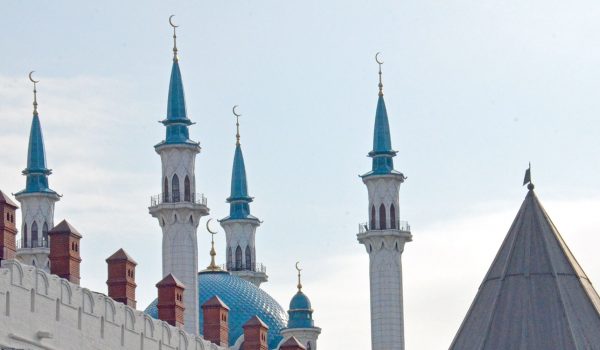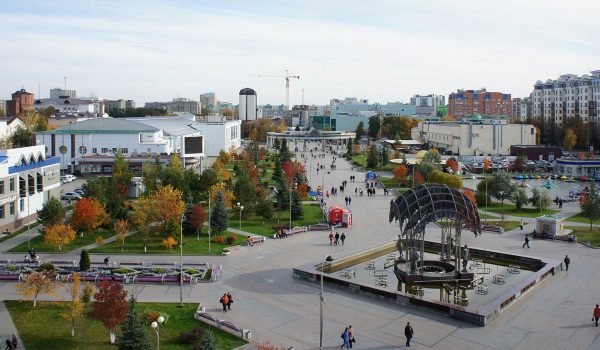As the site of execution of the last Russian Tsar (Czar) and his family and also the hometown of Boris Yeltsin, Ykaterinburg claims to be the city which heralds the start of new eras in Russia’s history. Just west of the city, obelisks beside the railway mark the official beginning of Siberia.
On 18 November 1723, the banks of the Iset River in the Urals rang with the sound of two forging hammers belonging to a local smithy which had just started up. That was the day when Ekaterinburg came into being. A contemporary of St Petersburg, the city emerged by order of Peter the Great to become the capital of this mining region. The city is still a centre of industry in the Urals. Factories such as Uralmash, Uralelectrotyazhmash and Turbomotorny export worldwide.
Yekaterinburg, known as Sverdlovsk in Soviet times, played a key role in twentieth century Russian history. The Revolution and Civil War started here with the brutal murder of the last Tsar, Nikolai Romanov (Nicholas II) and his family in 1918. Stalin’s struggle against “class enemies” in the 1930’s turned the city into the largest transshipment point for prisoners of the Gulag (prisoner workforce system) who were sent to work on the development of Siberia. In the tragic years of World War II, hundreds of factories, relocated here from all over Russia, kept alive the Russian armaments industry. With the war over, Yekaterinburg was where the greatest Russian military leader, Marshal Zhukov, saw out the exile perversely imposed by Stalin, who saw him as a threat.
On 1 May 1960 the city attracted world attention when Gary Powers, the pilot of a United States’ CIA U-2 spy plane was shot down nearby (his eventual release in a prisoner exchange was dramatised in the movie Bridge of Spies; read more in this BBC story). And then in the 1990s Yekaterinburg’s most famous politician, Boris Yeltsin, became the first president of the new Russia. He played a key role in dismantling the Party structure and opening up the Soviet myth. Until 1991, due to military secrecy, the city had been closed to foreign visitors.
Another traditional industry is the cutting of precious stones, or ‘Ural Samotsvety’. Around Yekaterinburg, emerald, aquamarine, tourmaline, amethyst, malachite, rhodonite and jasper are mined in large quantities. In 1738 a state-owned factory, the ‘mill’, was built on the shore of Iset Lake. Like the Peterhoff mill it created large cups, vases, obelisks, chandeliers, tables and icon-cases, all intended to be sent to palaces, churches, foreign courts and ambassadors. Each piece was custom designed and approved by the Tsar. Today’s visitors to the Hermitage Museum in St Petersburg admire the magnificent works of art created by those craftsmen.
Next to the Yekaterinburg-Passazhirsky railway station, there are plenty of route buses, trolleybuses and the Uralskaya metro station. The metro runs from 6.00am till midnight. The stations are located near the railway station, bus stations, the central part of the city, near the circus and the Dynamo stadium. Buses boast the most extensive network with 63 routes. You can also buy a travel card called Ekarta.
Yekaterinburg is becoming more popular as a tourist destination. The city is a large scientific and cultural centre with three theatres and an assortment of architectural monuments. Intending travellers should consider visiting the Geological Museum or the ‘Russian Samotsvety’ factory. The military museum contains the remains of Gary Powers’ U2 spy plane.
Here are some further suggestions, courtesy of the Russian National Tourism Office in the U.K.:
The history of Alexander Nevsky Cathedral dates back to 1838, when it was decided to lay a stone church with three thrones. The project was carried out by the famous architect of the day, Mikhail Malakhov, who created many beautiful buildings in Ekaterinburg. The church was erected in classicist style, its construction completed ten years later, in 1848. The main chapel of the church, as expected, was consecrated in honour of the holy Prince Alexander Nevsky, with the left one in honour of St Nicholas the Wonderworker.
The Museum of Fine Arts is known for its unique collection of Kashlin art castings and the world-famous Kashlinsky cast-iron pavilion. The exposition of modern Russian art of the twentieth century contains works covering most styles and trends by leading artists from Russia and CIS countries from the beginning of the twentieth century onwards.
The Alexander Nevsky Novo-Tikhvinsky Convent in Yekaterinburg opened at the end of the eighteenth century. Here stood an almshouse and a women’s community which became a convent in 1809. Later, it became one of the largest in the Urals. By the time of the revolution, the convent included six churches, many workshops, charitable institutions and a bakery.
Precious Stones
Another traditional industry is the cutting of precious stones, or ‘Ural Samotsvety’. Around Ekaterinburg, emerald, aquamarine, tourmaline, amethyst, malachite, rhodonite and jasper are mined in large quantities. In 1738 a state-owned factory, the ‘mill’, was built on the shore of Iset Lake. Like the Peterhoff mill it created large cups, vases, obelisks, chandeliers, tables and icon-cases, all intended to be sent to palaces, churches, foreign courts and ambassadors. Each piece was custom designed and approved by the Tsar. Today’s visitors to the Hermitage Museum in St Petersburg admire the magnificent works of art created by those craftsmen.


